A Concretization of an Approximation Method for Non-Affine Fractal Interpolation Functions
Abstract
1. Introduction
2. Mathematical Preliminaries
- 1.
- A map is called Lipschitz if there exists a real non-negative C such thatfor every . The smallest C in the above definition is called Lipschitz constant and it is defined as
- 2.
- A map is called Banach contraction if there exists such thatfor every .
- 3.
- A map is called φ-contraction if there exists a function such thatfor every .
- 4.
- A map is called Matkowski contraction if it is a φ-contraction where is non-decreasing and for all .
- 5.
- A map is called Rakotch contraction if it is a φ-contraction where is such that the function is non-increasing for every and for every .
- 1.
- Every Banach contraction is Lipschitz where the Lipschitz constant is smaller than 1.
- 2.
- Every Banach contraction is a φ-contraction, forfor every .
- 3.
- Every Rakotch contraction is a Matkowski contraction.
2.1. Iterated Function Systems
2.2. Countable FIFs
- (i)
- there exists such thatfor every ;
- (ii)
- (iii)
- (j)
- (jj)
- .
- 1.
- If the functions are Lipschitz with respect to the first variable and Rakotch contractions with respect to the second variable, then the functions are Rakotch contractions with respect to , wherefor all , where .
- 2.
- Given the same aforementioned framework, there exists an interpolation function corresponding to the system of data (1) such that its graph is the attractor of the CIFS .
3. Computational Background
3.1. Applied Technologies. Motivation (Pros)
3.2. Technical Notes on Performance
3.3. Limitations (Constraints)
4. Main Results
4.1. Countable Fractal Non-Affine Interpolation Schemes
| Algorithm 1: The Probabilistic scheme. |
|
| Algorithm 2: The Deterministic Scheme |
|
4.2. Countable Fractal Affine Interpolation Schemes
5. Conclusions
Author Contributions
Funding
Institutional Review Board Statement
Informed Consent Statement
Data Availability Statement
Acknowledgments
Conflicts of Interest
References
- Barnsley, M.F. Fractal functions and interpolation. Constr. Approx. 1986, 2, 303–329. [Google Scholar] [CrossRef]
- Barnsley, M. Fractals Everywhere; Academic Press: New York, NY, USA, 1988. [Google Scholar]
- Barnsley, M.F.; Elton, J.; Hardin, D.; Massopust, P. Hidden variable fractal interpolation functions. SIAM J. Math. Anal. 1989, 20, 1218–1242. [Google Scholar] [CrossRef]
- Mazel, D.S.; Hayes, M.H. Hidden-variable fractal interpolation of discrete sequences. In ICASSP 91: 1991 International Conference on Acoustics, Speech, and Signal Processing; IEEE Computer Society: Toronto, ON, Canada, 1991. [Google Scholar]
- Chand, A.K.B.; Kapoor, G.P. Hidden variable bivariate fractal interpolation surfaces. Fractals 2003, 11, 277–288. [Google Scholar] [CrossRef]
- Bouboulis, P.; Dalla, L. Hidden variable vector valued fractal interpolation functions. Fractals 2005, 13, 227–232. [Google Scholar] [CrossRef]
- Fernau, H. Infinite iterated function systems. Math. Nachrichten 1994, 170, 79–91. [Google Scholar] [CrossRef]
- Secelean, N. Countable Iterated Fuction Systems. Far East J. Dym. Syst. 2001, 3, 149–167. [Google Scholar]
- Secelean, N. Countable Iterated Function Systems; LAP Lambert Academic Publishing: Saarbrueken, Germany, 2013. [Google Scholar]
- Secelean, N. The fractal interpolation for countable systems of data. Univ. Beograd. Publ. Elektrotehn. Fak. Ser. Mat. 2003, 14, 11–19. [Google Scholar] [CrossRef]
- Secelean, N. Fractal countable interpolation scheme: Existence and affine invariance. Math. Rep. (Bucur.) 2011, 13, 75–87. [Google Scholar]
- Ri, S. A new idea to construct the fractal interpolation function. Indag. Math. 2018, 29, 962–971. [Google Scholar] [CrossRef]
- Kim, J.; Kim, H.; Mun, H. Nonlinear fractal interpolation curves with function vertical scaling factors. Indian J. Pure Appl. Math. 2020, 51, 483–499. [Google Scholar] [CrossRef]
- Ri, S.; Drakopoulos, V. How Are Fractal Interpolation Functions Related to Several Contractions? In Mathematical Theorems—Boundary Value Problems and Approximations; Alexeyeva, L., Ed.; IntechOpen: London, UK, 2020. [Google Scholar]
- Pacurar, C.M. A countable fractal interpolation scheme involving Rakotch contractions. arXiv 2021, arXiv:2102.09855. [Google Scholar]
- Dalla, L.; Drakopoulos, V.; Prodromou, M. On the box dimension for a class of non-affine fractal interpolation functions. Anal. Theory Appl. 2003, 19, 220–233. [Google Scholar] [CrossRef]
- De Amo, E.; Chiţescu, I.; Diaz Carrillo, M.; Secelean, N.A. A new approximation procedure for fractals. J. Comput. Appl. 2003, 151, 355–370. [Google Scholar] [CrossRef][Green Version]
- Dubuc, S.; Elqortobi, A. Approximations of fractal sets. J. Comput. Appl. Math. 1990, 29, 79–89. [Google Scholar] [CrossRef][Green Version]
- Chiţescu, I.; Miculescu, R. Approximation of fractals generated by Fredholm integral equations. J. Comput. Anal. Appl. 2009, 11, 286–293. [Google Scholar]
- Chiţescu, I.; Georgescu, H.; Miculescu, R. Approximation of infinite dimensional fractals generated by integral equations. J. Comput. Appl. Math. 2010, 234, 1417–1425. [Google Scholar] [CrossRef][Green Version]
- Miculescu, R.; Mihail, A.; Urziceanu, S.-A. A new algorithm that generates the image of the attractor of a generalized iterated function system. Numer. Algorithms 2020, 83, 1399–1413. [Google Scholar] [CrossRef]
- Matkowski, J. Integrable solutions of functional equations. Dissertationes Math. 1975, 127, 68. [Google Scholar]
- Hutchinson, J. Fractals and self similarity. Indiana Univ. Math. J. 1981, 30, 713–747. [Google Scholar] [CrossRef]
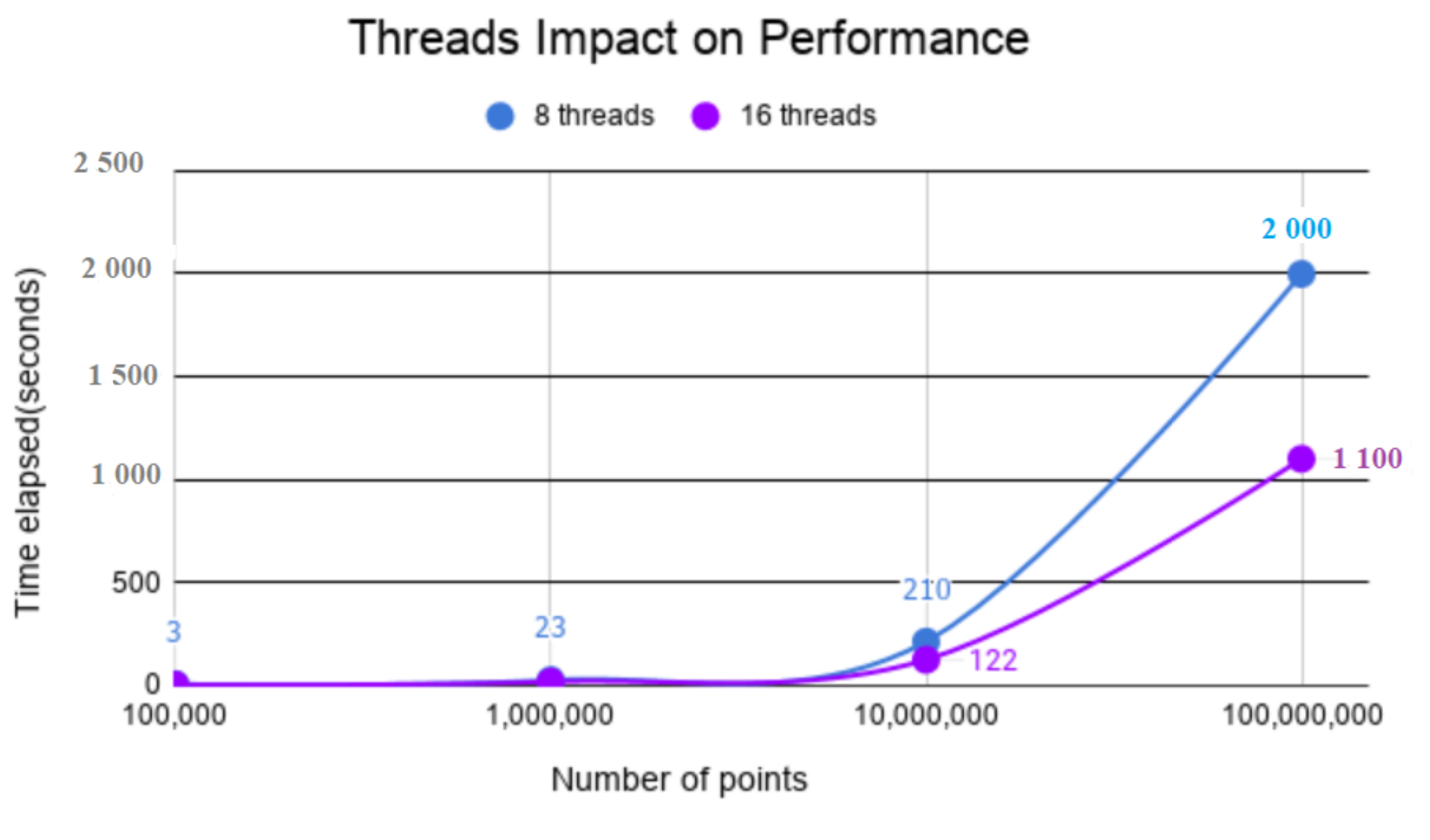
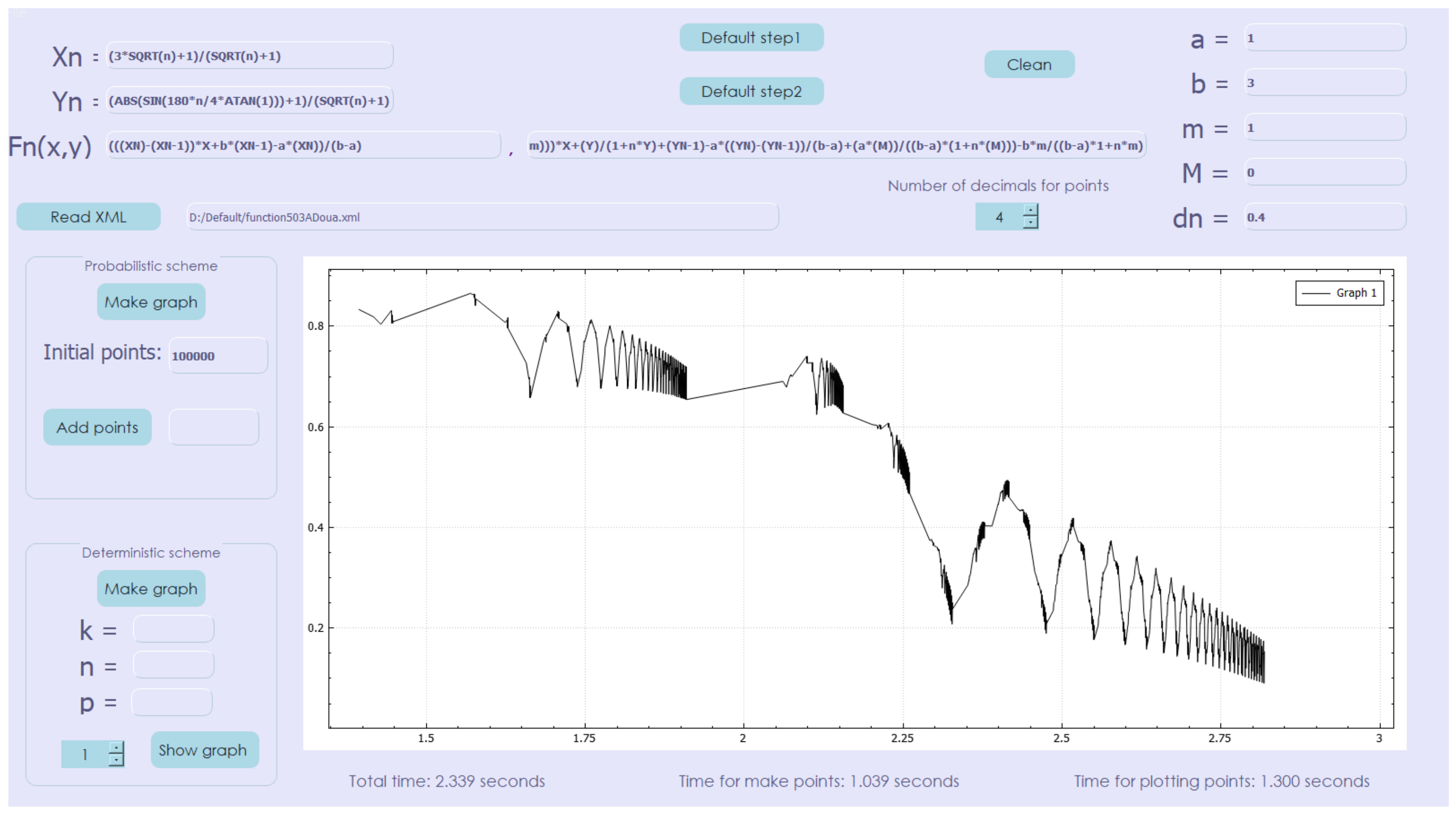
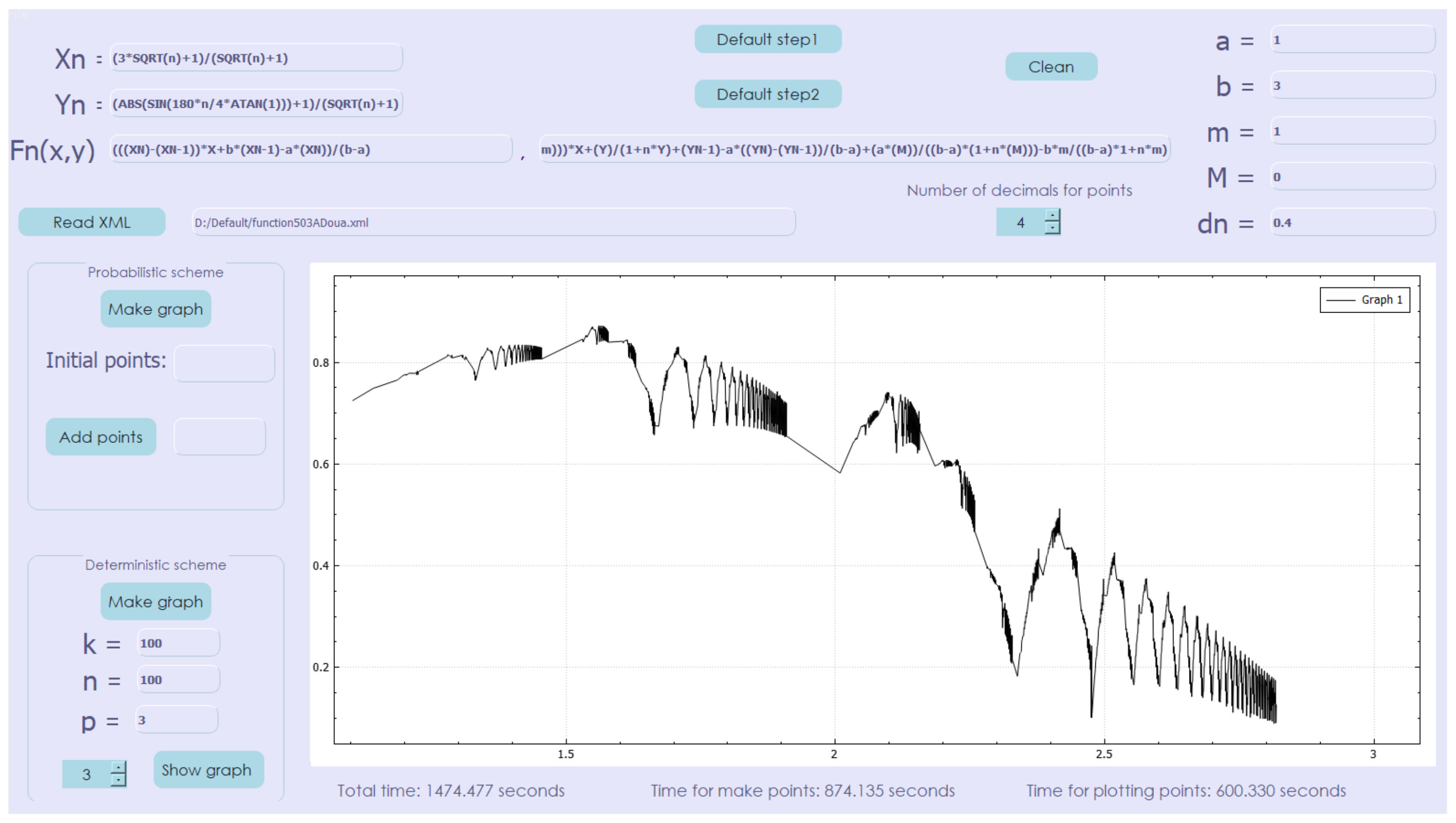
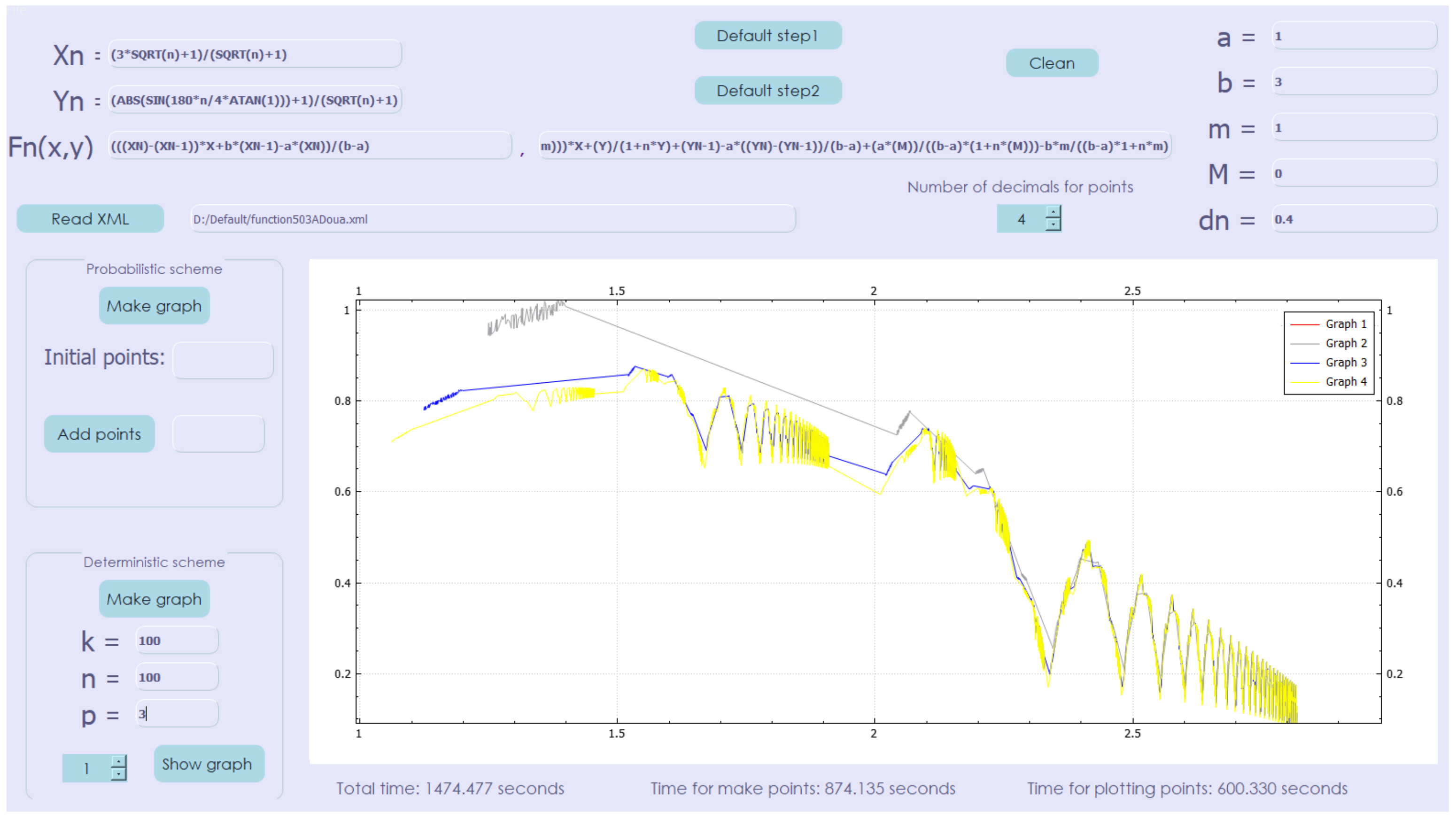
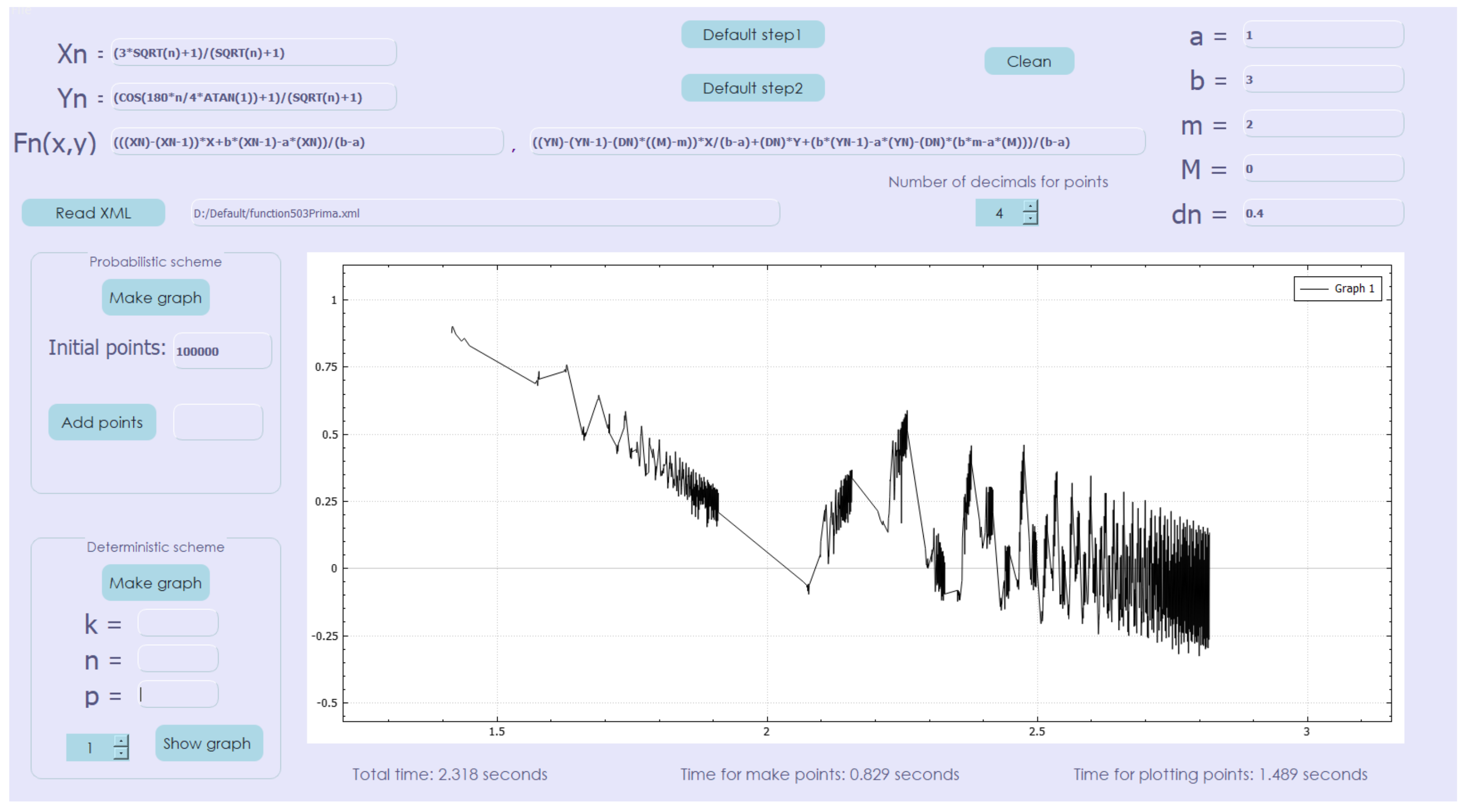

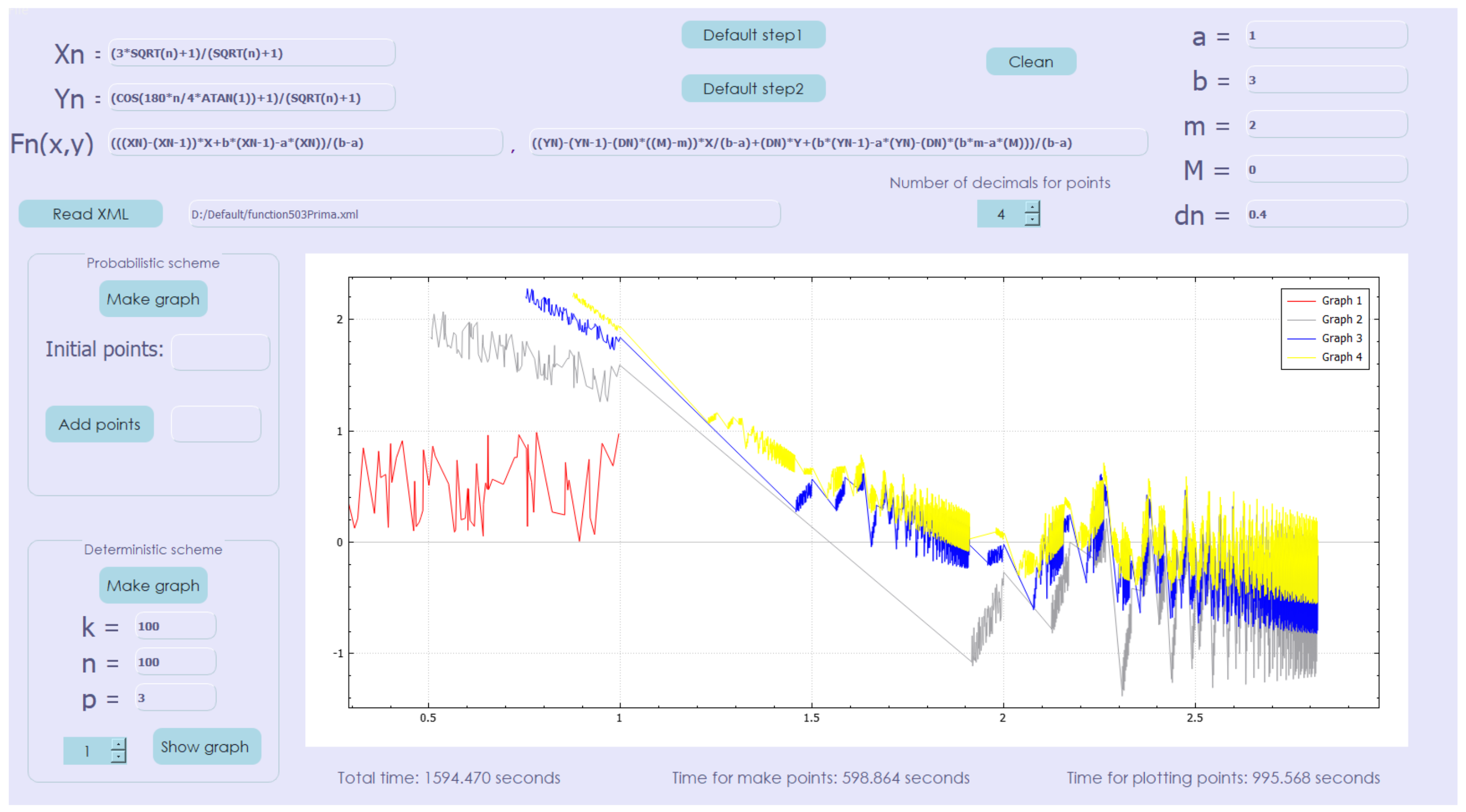
Publisher’s Note: MDPI stays neutral with regard to jurisdictional claims in published maps and institutional affiliations. |
© 2021 by the authors. Licensee MDPI, Basel, Switzerland. This article is an open access article distributed under the terms and conditions of the Creative Commons Attribution (CC BY) license (https://creativecommons.org/licenses/by/4.0/).
Share and Cite
Băicoianu, A.; Păcurar, C.M.; Păun, M. A Concretization of an Approximation Method for Non-Affine Fractal Interpolation Functions. Mathematics 2021, 9, 767. https://doi.org/10.3390/math9070767
Băicoianu A, Păcurar CM, Păun M. A Concretization of an Approximation Method for Non-Affine Fractal Interpolation Functions. Mathematics. 2021; 9(7):767. https://doi.org/10.3390/math9070767
Chicago/Turabian StyleBăicoianu, Alexandra, Cristina Maria Păcurar, and Marius Păun. 2021. "A Concretization of an Approximation Method for Non-Affine Fractal Interpolation Functions" Mathematics 9, no. 7: 767. https://doi.org/10.3390/math9070767
APA StyleBăicoianu, A., Păcurar, C. M., & Păun, M. (2021). A Concretization of an Approximation Method for Non-Affine Fractal Interpolation Functions. Mathematics, 9(7), 767. https://doi.org/10.3390/math9070767




